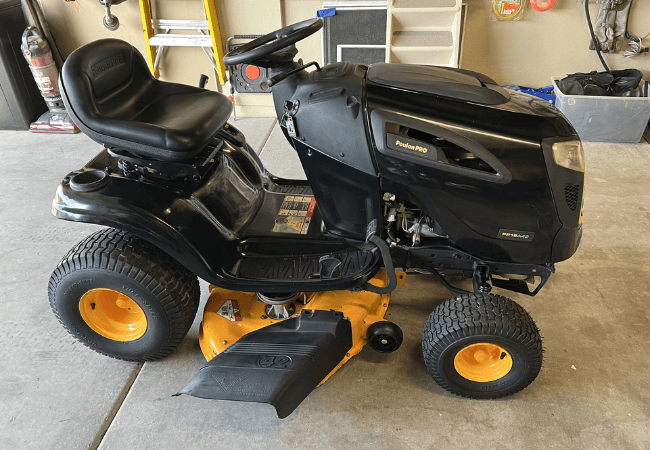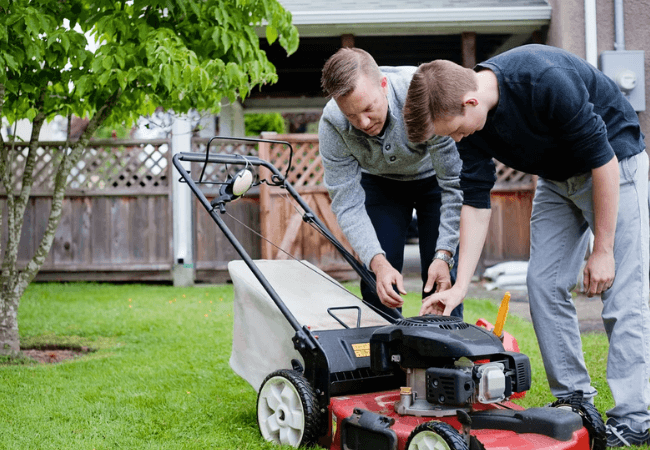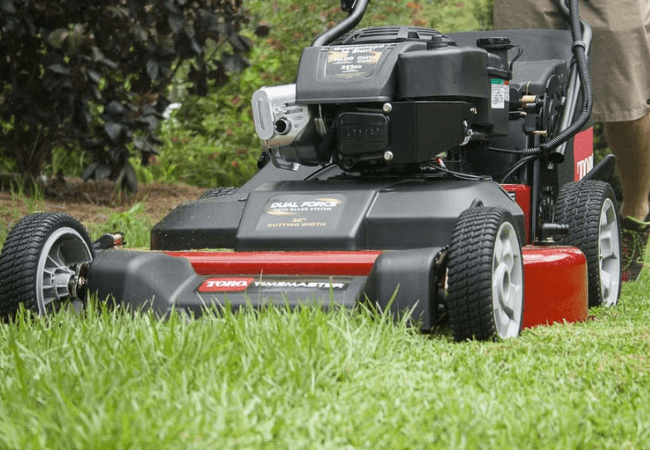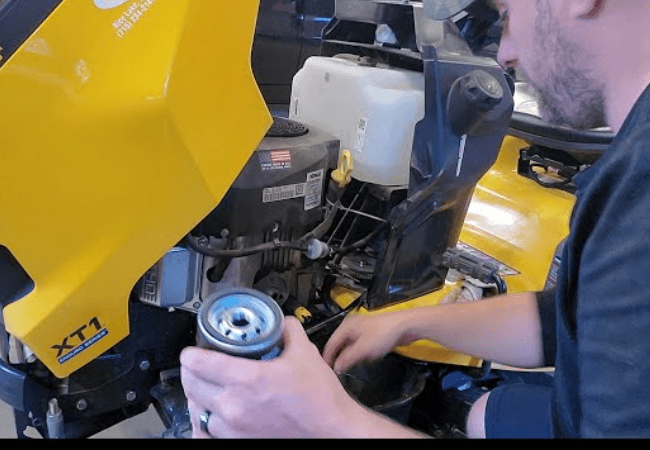A weed wacker is a typical instrument that many people use since it can be used to trim and cut grass, wildflowers, and other types of plants.
The topic of whether a weed wacker can be utilized to mow a lawn is, however, one that many people have.
In this blog article, we’ll go into more depth about the response to this inquiry.
What is a Weed Wacker?
A motorized instrument called a weed wacker, often called a string trimmer or weed eater, is used to cut and trim grass, weeds, and other types of plants.
A spinning cutting head is mounted at one end of a long shaft that makes up the device.
Depending on the type of weed wacker, the chopping head may have a blade or a line. Gasoline, electricity, or battery can all be used to operate weed wackers.
How Does a Weed Wacker Differ from a Lawn Mower?
A lawn mower is a device used effectively and uniformly cut grass. It cuts the grass at a constant height using a flat blade that rotates horizontally.
There are several varieties of lawnmowers, including push mowers, self-propelled mowers, and riding mowers. A weed wacker, in comparison, is not made to cut grass uniformly.
It is intended to clip tiny patches of weeds or grass instead. A weed wacker’s vertical cutting head rotation makes it challenging to mow the lawn uniformly.
A weed wacker might not be as effective as a lawn mower in cutting higher grass or wider expanses of grass.
Pros and Cons of Using a Weed Wacker to Mow a Lawn
There are benefits and drawbacks to mowing a lawn using a weed wacker. Among the benefits are the following:
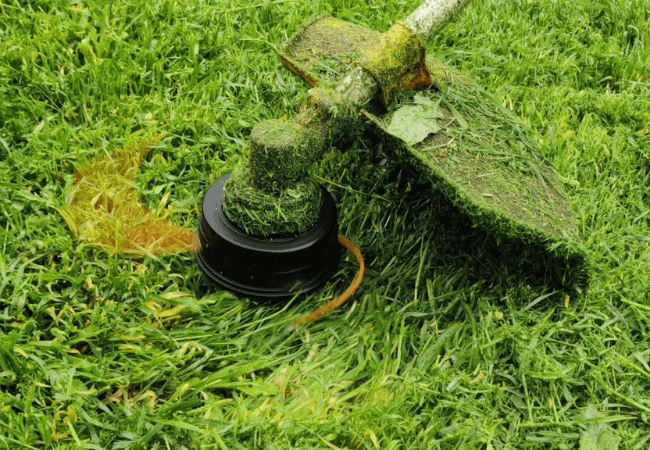
- Weed wacker are portable and straightforward, making them the perfect tool for tiny lawns or difficult-to-reach places.
- Cost-effective: Weed whackers are an appealing alternative for individuals on a tight budget because they are often less expensive than lawnmowers.
- A weed wacker’s versatility allows it to cut around grass impediments, including flower beds, edges, and other obstructions.
Yet, some disadvantages of mowing a lawn using a weed wacker include the following:
- Irregular Cutting: As previously indicated, a weed wacker is not intended to cut grass uniformly. Therefore the resulting lawn may appear uneven or spotty.
- Time-consuming: If your lawn is vast, using a weed wacker to mow it may take more time than doing so.
- Safety Issues: A weed wacker can be harmful if not used correctly. If the cutting head touches the operator’s skin or clothes while rotating fast, it may hurt them.
Safety Concerns When Using a Weed Wacker
Safety measures must be taken to prevent mishaps and injuries when operating a weed wacker. Among the safety recommendations are the following:
- Use Safety Gear: Using a weed wacker, always utilize protective gear such as gloves, eye protection, and shuttered shoes.
- When operating a weed wacker, ensure the cutting head is in good shape and securely fastened. A cutting head that is loose or broken might be dangerous.
- Keep Spectators Away: Always maintain a 50-foot minimum distance between the location you are operating on and spectators and dogs.
Can a Weed Wacker Be Used to Mow a Lawn?
However, there are certain restrictions; a weed wacker can be used to cut grass.
A weed wacker can mow a smaller lawn or trim difficult-to-reach places, but it is not advised for cutting long grass or on expansive lawns.
It’s vital to remember that utilizing a weed wacker to mow a lawn may not provide an equal cut and may need more time than doing so with a lawn mower.
Tips for Using a Weed Wacker to Mow a Lawn
Here are some suggestions to help you obtain the best results if you decide to mow your lawn using a weed wacker:
- Employ the Proper Cutting Head: Certain weed eaters are equipped with blades rather than lines. While a blade can cut grass more effectively and uniformly than a line, it also takes more power and might not work with all weed wacker models.
- Change the Cutting Height: Most weed eaters include a cutting height that may be changed. Set the cutting height to the highest position to avoid scalping the grass.
- Conduct Overlapping Rounds: Perform overlapping moves over the grass to provide an equal trim. This will guarantee that the grass is trimmed uniformly and eliminate missing patches.
- Ensure the weed wacker is wholly charged or has enough fuel to finish the task by checking the battery or fuel level. Running out of gasoline or electricity can be irritating and time-consuming when mowing.
Conclusion
While a weed wacker may be used to mow a lawn, it is not advised for cutting tall grass or on huge lawns.
A weed wacker offers benefits like mobility and cost-effectiveness but has drawbacks, including uneven cutting and safety issues.
If you mow your lawn using a weed wacker, use the proper cutting head and height and take all necessary safety measures.


